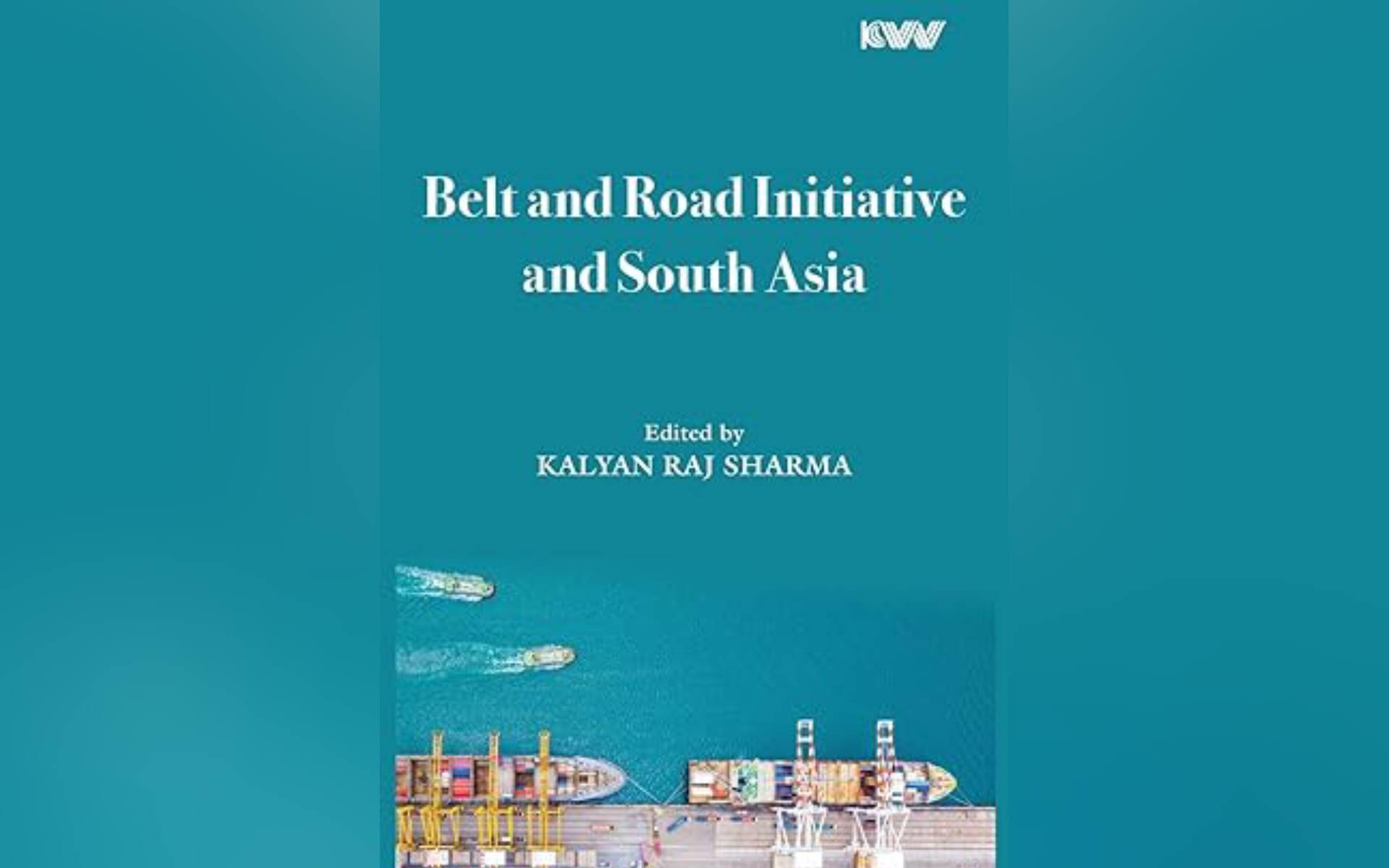
The Belt and Road Initiative (BRI) has generated global debate—praised for its visionary development goals and criticized for its geopolitical implications. In South Asia, where infrastructural needs and economic disparities dominate most regional discussions, the BRI has been both a promise and a mystery. Edited by Dr. Kalyan Raj Sharma, Belt and Road Initiative and South Asia is a well-structured and ambitious book that gathers an array of perspectives from across the region to analyze this multifaceted initiative. The book offers valuable insights into how various South Asian and Asian countries perceive, interact with, and are impacted by China’s massive infrastructure and connectivity project.
Chapter-by-Chapter Reflections
The opening chapter, authored by Dr. Sharma himself, serves as the anchor for the entire book. He sets out the conceptual foundation of the BRI, its geopolitical importance in South Asia, and the purpose of this edited volume—to present a platform where policymakers, scholars, and practitioners can critically reflect on the BRI, not as an abstract policy but as a lived reality in South Asia.
In Chapter 2, Yin Xiangshuo tackles a pressing concern: China’s trade imbalance with South Asian nations. His analysis reveals that the BRI has yet to effectively narrow trade gaps between China and countries like India, Bangladesh, Nepal, and Sri Lanka. He suggests that deeper cooperation and more targeted trade mechanisms are necessary to realize the BRI’s potential in this area.
Chapter 3, by Bhoj Raj Poudel, “The BRI and SDGs Nexus: Cooperation or Confrontation?”, examines whether the Belt and Road Initiative aligns with the United Nations’ Sustainable Development Goals (SDGs). It notes that BRI’s funding for infrastructure can stimulate global growth but raises questions about whether Chinese-led investments truly support local definitions of sustainability.
Hina Aslam, in Chapter 4, highlights “BRI for Trade and Connectivity in South Asia: A CPEC Model.” Her research on the China–Pakistan Economic Corridor (CPEC) presents it as an example of connectivity that can drive national and regional development. However, the model also faces challenges ranging from policy incoherence to security concerns.
Representing the Bangladeshi viewpoint, Chapter 5, “BRI, Trade and Connectivity: Bangladesh’s Perspective,” by Mahfuz Kabir and Nahian Reza Sabriet, argues that regional connectivity—not just bilateral relations—must be at the core of BRI’s success in South Asia. The authors convincingly call for region-wide and inclusive planning that goes beyond national borders.
Chapter 6, by Zhang Jianghong and Yang Yabo, “Strengthening International Cooperation and Building a Community of Shared Future between Nepal and China,” positions the BRI as an opportunity for Nepal to access much-needed infrastructure investment. However, the authors also sound a note of caution: projects must undergo rigorous economic scrutiny to avoid debt traps.
Chapter 7, by Di Fangyao, Cui Hongye, and Yang Fan, further explores this in “On Countermeasures and Suggestions to Further Economic Cooperation between China and Nepal.” They emphasize the need for political stability, mutual trust, and strategic communication before bilateral cooperation under the BRI can be truly effective.
Chapter 8, written by Vaqar Ahmed, reflects on “Evidence and Lessons from BRI: The Case of China–Pakistan Economic Corridor.” Drawing lessons from the CPEC experience, he finds progress in power generation and logistics in Pakistan but urges policymakers to adopt a long-term perspective regarding fiscal and environmental sustainability.
As the world has evolved since the BRI’s inception, Chapter 9 addresses this transformation in full. Partha S. Banerjee, in “The COVID-19 Pandemic and BRI 2.0,” describes how the pandemic reshaped global financing, exposed new debt issues, and may prompt China to adopt a sharper and more cautious approach to foreign investments. He argues that BRI 2.0 will entail greater flexibility and responsibility.
Chapter 10, “Chinese Belt and Road Initiative (BRI) and Sustainable Development in Lao PDR,” includes a case study by Vanxay Sayavong from Laos. The Laos–China Railway project illustrates how infrastructure can advance national development goals, but it also underscores the need for strong domestic governance and strategic planning in host countries.
In Chapter 11, Nur Shahadah Jamil discusses “Malaysia’s Response towards China’s Belt and Road Initiative under Mahathir 2.0.” Malaysia’s reoriented strategy under former Prime Minister Mahathir Mohamad demonstrates how a middle-power country can engage pragmatically with China—prioritizing useful BRI projects while avoiding overdependence.
The final chapter, “Win-Win Cooperation through the BRI: What Constitutes a ‘Win’ for the Philippines?” by Darlene V. Estrada, provides a nuanced analysis of how smaller nations define success within the BRI framework. Estrada calls for deeper explorations of project design, transparency, and reciprocity, moving beyond simplistic narratives of economic success or failure.
A Thoughtful and Timely Contribution
What sets Belt and Road Initiative and South Asia apart is its balanced tone. It is neither a cheerleading manual for Chinese infrastructure nor a skeptical rejection of the BRI’s intentions. Instead, Dr. Sharma’s editorial approach fosters critical inquiry. The book neither idealizes nor demonizes China’s global ambitions—it asks difficult questions, provides evidence-based observations, and allows regional voices to shape the conversation.
From Nepal to the Philippines, and from development goals to trade imbalances, the contributors offer an open-ended exploration of how South Asia is responding to the largest transnational development project of our time. As South Asia strives to find its place in an increasingly interconnected world, Belt and Road Initiative and South Asia is an essential read. Policymakers, academics, and development experts will find this volume particularly valuable—not only for its insightful case studies but also for its broader analysis of regional integration, foreign investment, and infrastructure diplomacy.
In an era when international cooperation is both more necessary and more contested than ever, this book reminds readers of the value of well-informed, engaged, and reflective dialogue.